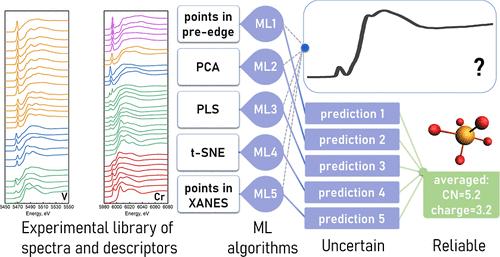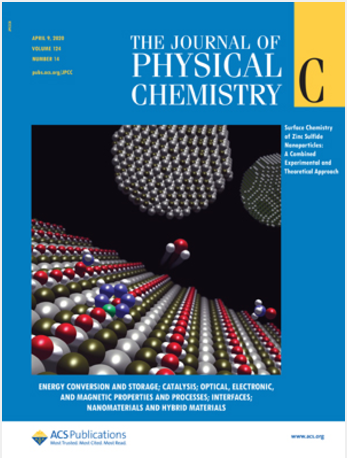Fingerprint Analysis of X-ray Absorption Spectra with the Machine-Learning Method Trained on the Multielement Experimental Library
IF 3.3
3区 化学
Q2 CHEMISTRY, PHYSICAL
引用次数: 0
Abstract
X-ray absorption near edge structure (XANES) spectroscopy is a powerful method to probe the oxidation state and local structure of metals in catalytic materials. However, it suffers from a lack of unbiased data analysis protocols. Machine learning (ML) overcomes human-related factors by uncovering relevant spectrum-structure relationships and resulting cross-validation analysis. The bottlenecks in the automatic processing of experimental data are the lack of chemically diverse XANES reference libraries and the systematic differences between theory and experiment. Therefore, compiling experimental reference libraries across the periodic table and rational application of ML methodology to small (in terms of data science) training data sets becomes increasingly important. This work revises the classical XANES fingerprint analysis by database augmentation, feature extraction, cross-validation, and uncertainty analysis. We apply the developed methodology to decipher the oxidation state and local coordination of supported vanadium-oxo species (VOx), which change their structure by participating in oxidative dehydrogenation catalysis. The developed Cr K-edge and V K-edge experimental library and instruments for analysis may serve as a starting point for a unified platform for fingerprint XANES data analysis.

求助全文
约1分钟内获得全文
求助全文
来源期刊

The Journal of Physical Chemistry C
化学-材料科学:综合
CiteScore
6.50
自引率
8.10%
发文量
2047
审稿时长
1.8 months
期刊介绍:
The Journal of Physical Chemistry A/B/C is devoted to reporting new and original experimental and theoretical basic research of interest to physical chemists, biophysical chemists, and chemical physicists.
 求助内容:
求助内容: 应助结果提醒方式:
应助结果提醒方式:


